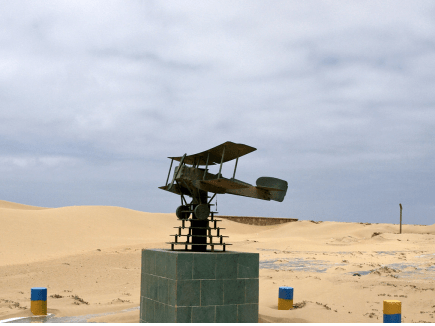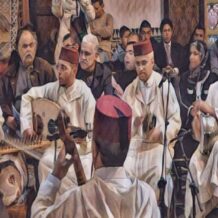
Saint-Exupéry’s Timeless Lessons: A Journey in the Sahara In Search of The Little Prince
The 10th Edition of the Taragalte Festival will take place from November 1-3, 2019 in M’hamid El Ghizlane. The festival celebrates traditions of Southern Morocco and this year’s annual event is set to introduce the work of Frederic Coconnier, author of Nomades Du Monde Sur Les Traces D’ Antonine De Saint-Exupery (Nomads Of The Southern World, Traces of D’ Antonine De Saint-Exupery).
The 2019 theme of the Taragalte Festival is “The Wisdom of the Sands” and its hosts seek to encourage the links that unite us through art, culture, and dialogue. In the footsteps of Saint-Exupéry’, the festival will bring together music groups from different parts of the world to enrich the sharing initiated for years in M’Hamid El Ghizlane. Artists and speakers with rich and diverse backgrounds and plural inspirations will be invited to take part in the Antoine de Saint-Exupéry’s humanistic journey. Americas, Africa, and Europe will be the invited continents. The programming is conceived as a journey through the heart of Antoine de Saint-Exupéry’s work and his extraordinary career. The author’s favorite themes will be the avenues of discussion.
Le Petit Prince was first published in 1943 and was written by Antoine de Saint Exupery.
Le Petit Prince was first published in 1943 and was written by Antoine de Saint Exupery. This literary work falls into the category of children’s literature. It has several philosophical themes and is poetically depicted in watercolors. The Little Prince tells the story of how a pilot is stranded in the desert and meets a young prince. The book has been said to pass along the teaching that an inner child exists within every adult and further compels the reader to ask questions and never stop looking for solutions.

Le Petit Prince has been voted the best book in the twentieth century in France, translated into hundreds of languages, and is one of the most widely read pieces of literature in the world. In spite of this, few know that the Sahara Desert was one of the key inspirations for the book.
Between 1927 and 1929, Saint Exupery spent eighteen months working as postal aviation manager in Tarfaya, a coastal town located in the Western Sahara Desert of Morocco. The book was written in 1943, one year before Saint Exupery passed away. Although nearly fourteen years after his position in Tarfaya ended, the publication of The Little Prince made clear that his time in Morocco had a profound effect on him. His memories are represented by Le Petit Prince’s images of sand dunes, stars, sheep, and other elements of Sahara desert life.
Antoine de Saint-Exupéry was a French writer, poet, journalist, and aviator born in 1900. His laureate award-winning writing won him the United States National Book Award. He was best remembered for Le Petit Prince. The novel made him internationally recognized as a humanist and a thinker.
Saint-Exupéry was chosen to represent the 2019 Taragalte cultural festival because of the ideas he stood for, his love for Morocco, and his connection with Moroccan nomads. He recognized their ability to link nature and the universe, concepts he also wrote about.
Saint-Exupéry’s first time in Morocco was in 1921. He was stationed in Casablanca and Rabat for military service. After his 18 months stay in Tarfaya (1927), he moved to South America then returned to Morocco in the 1930s to live in Casablanca with his wife. The couple stayed there for a long period. Saint-Exupéry returned again to Morocco in 1936. He was asked to appear in the film Courrier Sud. The moving picture was directed by Pierre Bilion and set in Essaouira. It depicted Saint-Exupéry’s bond with Morocco and how the desert fed the writer’s imagination. Saint-Exupéry died in a plane crash in July of 1944. He was 44 years old.

Tarfaya– in 1927 Saint-Exupery was sent to Tarfaya by Aeropostale, a French postal service. The company aimed to create an air route connecting France and it’s French colonies in Africa. The author and pilot Saint-Exupery spent 18 months in the small Southwestern Moroccan coastal town.
Tarfaya has a multifaceted history that includes being a British Trading Post until 1895. Later in 1912 it was occupied as part of the Spanish Sahara and considered a Spanish colony. At the time the territory was known as the Cape Juby region; this changed in 1958 after the Ifni War.
Although the Tarfaya’s population counted only 8,027 inhabitants in the 2014 census, it remains a historical symbol and continues to be relevant into the 21st century. Tarfaya took center stage at the Green March of 1975 and is geographically the closest city to the UNESCO World Heritage Khenifiss National Park. It is also home to a number of economic projects, including Tarfaya Wind Farm, the largest wind farm in Africa. It is geographically unique for being the meeting point of the Atlantic coast and Sahara.
The novel, Nomads Of The Southern World, Traces of D’ Antonine De Saint-Exupery, explores his stay in Tarfaya. The story includes his interactions with Moroccan nomads and experiences living in a desert climate. Saint-Exupery expressed memories of cold nights filled with shooting stars and days contrasted by hot sandy desert life. Sahara’s natural elements eventually inspired his writing.

Frederic Coconnier– is journalist and author of Nomades Du Monde Sur Les Traces D’ Antonine De Saint-Exupery. His story chronicles the misadventures of Saint-Exupery and depicts his lifestyle before and while living in the desert. He contrasts the high society Parisian life the writer experienced and talks about his transition to Tarfaya. His lonely desert dwelling in the South Western Moroccan coastal town was a big change from Paris. The book also highlights the relationships Saint-Exupéry established with the desert nomads.
The Taragalte Festival website shares that “Antoine de Saint-Exupéry was a much-needed thinker today. He was a great humanist, with an open mind. He said that knowing people, and meeting them, was a way to solve problems. He also had a real awareness of the need to preserve the Earth.”





